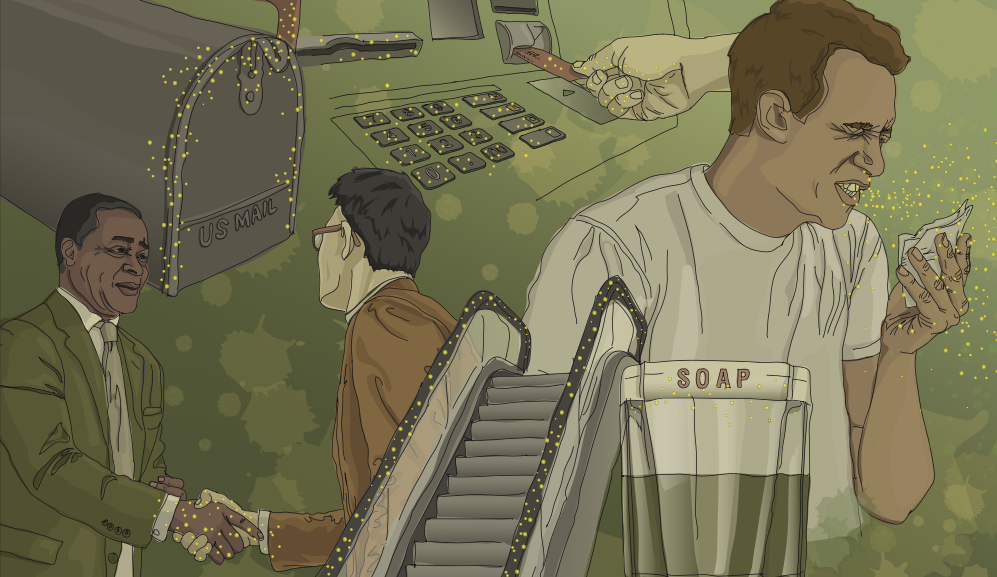Illustration by Grace Downey
“I’m always ready to travel, though my trips are never planned… It was time to hit the road when Robert sneezed in his hand. So here comes his old buddy Bill, his handshake was so warm. I climbed aboard his hand and went on the journey of a germ.”
These verses of a children’s song are from the popular PBS kids show “Sid the Science Kid,” educating children on the portability of germs in our society. For example, you pull into the gas station and do something you’ve done countless times before—grab the handle to pump gas into your car. The problem is, after you’re done, whatever you touch is now exposed to germs, whether that be the door handle, your keys or steering wheel.
Where do germs live?
Seventy-one percent of all gas pumps contain the presence of bacteria, yeast and mold cells, according to a University of Arizona study that tested high traffic surfaces in major cities across the country.
Besides the gas station, the study found that ATM, mailbox handles, and escalator rails were the most common areas where the direct transfer of bacteria, viruses or other germs could happen. Bathroom door handles are also high carriers of germs, and about a quarter of public soap dispensing stations were found to have fecal matter on them.
A common carrier of germs today can be found in the everyday smart phone which often contains bacteria like staph (which can lead to skin infections), salmonella (serious stomach illness) and pseudomonas (eye infections).
Most cold and flu viruses are spread because people touch surfaces and then their faces, other objects and other people. Shaking hands and sharing cups and utensils with an infected person can also lead to illness.
A human being holds about half a liter of fluid in their lungs. When someone sneezes, they spray as much as a water bottle’s worth of mucus into the air. Droplets can travel up to 114 miles per hour at a distance anywhere between six to 25 feet. They can stay in the air for up to 10 minutes, enter ventilation systems.
How to prevent the spread of germs
The journey of a germ is inevitable, but people can take steps to prevent the spread of disease. Avoiding touching of hands and face is a good way to avoid illness. An annual flu vaccination can help to prevent or at least minimize effect of the flu.
Experts agree that frequent hand-washing can help to solve these issues. However, that does not stop you from breathing in infectious droplets after someone coughs or sneezes. Coughing or sneezing into your sleeve is the most effective way to stop the journey of a germ. Use tissues frequently but dispose of used tissues immediately. Frequently wash hands with soap and water followed by air drying or using a single use towel.
Disinfect hard surfaces in the home like tables, desks and doorknobs, but don’t forget surfaces like computers, textbooks, pencils, game controllers and more. If the items cannot be disinfected, make sure to wash your hands after touching them. Clean your smartphone or tablet with either a micro fiber cloth or cotton swab and a mix of water and rubbing alcohol to get rid of germs. Do not spray any device directly.
Stay healthy!
Practicing healthy personal and home habits can help to prevent illness as well. A healthy diet, drinking plenty of water, and moderate exercise can help to maintain a strong immune system. Getting more sleep helps your immune system and can decrease the likelihood that you will get sick.
Finally, if you are infected by that germ, your coworkers will thank you if you stay home.

